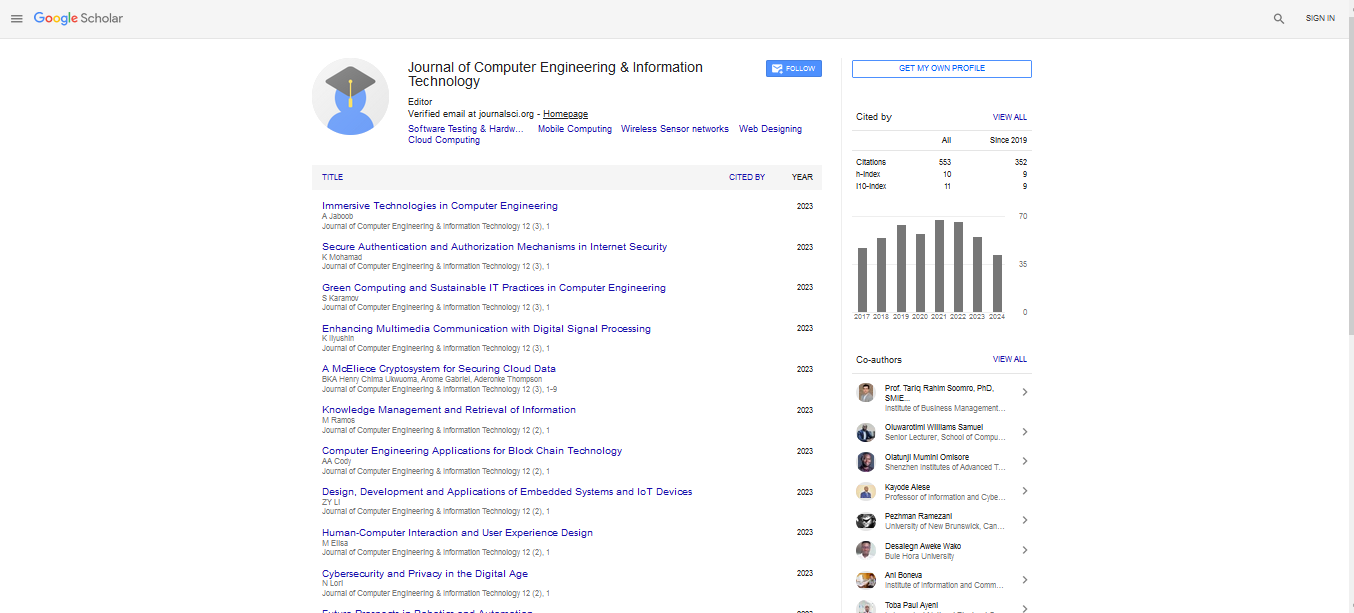Research Article, J Comput Eng Inf Technol Vol: 6 Issue: 3
Wireless Sensor Networks Nodes Distributed in Shapes of Polygons for Promote Distance, Time Delay and Optimization Energy Consumption via Bluetooth
Asmaa Salih Hammoodi1*, Fatih V. Celebi2 and Remzi Yildrim3
1Department of Electronic Engineering, Yildirim Beyazit University,Turkey and College of Computer Science, University of Tikrit, Iraq
2Department of Computer Engineering, Yildirim Beyazit University,Turkey
3Department of Electronic Engineering, Yildirim Beyazit University, Turkey
*Corresponding Author : Asmaa Salih Hammoodi
Department of Computer engineering, Yildirim Beyazit University,Turkey
E-mail: asmaaphd11@gmail.com
Received: May 23, 2017 Accepted: June 14, 2017 Published: June 18, 2017
Citation: Hammoodi AS, Celebi F, Yildrim R (2017) Wireless Sensor Networks Nodes Distributed in Shapes of Polygons for Promote Distance, Time Delay and Optimization Energy Consumption via Bluetooth. J Comput Eng Inf Technol 6:3. doi: 10.4172/2324-9307.1000174
Abstract
Recently, many algorithms have been developed, using software, in the field of reducing time delay, optimizing energy or increasing transmitter distance. This paper shows how to distribute a wireless sensor networks nodes (WSNs) by use of geometric shapes especially polygons. We presented link design in successive shapes of polygons in a Handshaking and PEGASIS Algorithms for getting: reduce delay time, Optimize Energy Consumption and Increase the transmitter distance for wireless sensor networks nodes (WSNs) through Bluetooth. In Handshake technique depends on inference engine during every cycle. Each session starts automatically from the first node to the last node depend on Bluetooth. Bluetooth behaves in two modes, master radio and a slave radio, depends upon Bluetooth portrait’s if it’s in transmitter or receiver.To achieve improvement, we compared between Handshaking algorithm and PEGASIS , to get optimize energy, reduced time delay, and distance will be increased among nodes and base station.
 Spanish
Spanish  Chinese
Chinese  Russian
Russian  German
German  French
French  Japanese
Japanese  Portuguese
Portuguese  Hindi
Hindi 